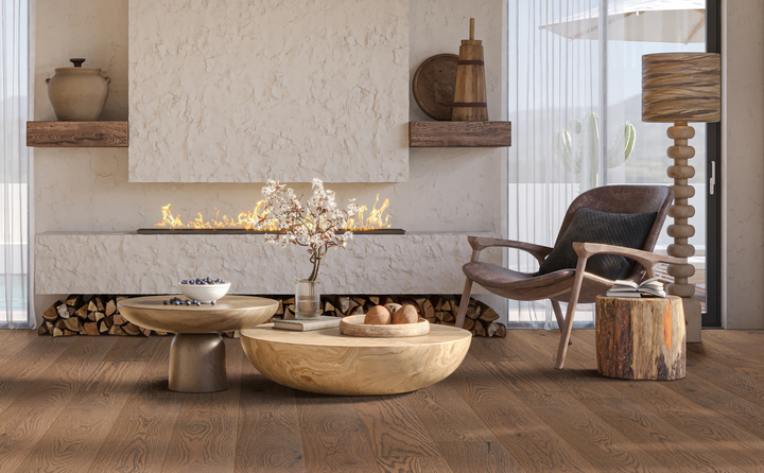Table of Contents:
- Why Consistent Care Matters
- Sweeping and Vacuuming Basics
- The Importance of Moisture Control
- Using Protective Mats and Rugs
- Smart Furniture Practices
- Dealing with Spills and Stains Promptly
- Polishing and Refreshing Hardwood
- Long-Term Care for Enduring Beauty
 Why Consistent Care Matters
Why Consistent Care Matters
Hardwood flooring remains one of the most desirable features in any home, admired for its warmth, longevity, and ability to boost property value. However, daily foot traffic, pets, and environmental factors can quickly take their toll if regular care is overlooked. By developing consistent routines, such as those recommended for Wellington hardwood flooring, homeowners can prevent premature wear and keep their floors as striking as the day they were installed.
According to expert sources, daily maintenance supports surface cleanliness and long-term durability. Establishing simple daily habits minimizes dirt buildup, protects finishes, and reduces the likelihood of deep scratches, ultimately saving money and effort on costly repairs.
Sweeping and Vacuuming Basics
Frequent sweeping or vacuuming is one of the easiest, most effective ways to preserve hardwood floors. Fine grit and dust can act like sandpaper, dulling finishes over time. Choose a soft-bristle broom for daily touch-ups or a vacuum with a dedicated hardwood setting that won’t scratch surfaces. For busy households, sweeping each morning or evening keeps floors free from debris tracked in from outside, especially during muddy or sandy seasons.
The Importance of Moisture Control
Water is one of the greatest threats to wood flooring, capable of causing warping, swelling, or unsightly stains. Small habits—like removing shoes at the door or wiping down pet paws—can dramatically reduce moisture exposure. Always clean up spills immediately with a dry or slightly damp cloth. Consider using a dehumidifier to maintain optimal indoor conditions in high-humidity regions or seasons. Effective moisture management is a cornerstone of lasting floor beauty. Regularly check for leaks around appliances or windows, addressing any issues promptly to prevent cumulative damage. Even minor, consistent exposure to moisture can compromise the integrity and appearance of your wood floors over time.
Using Protective Mats and Rugs
The strategic placement of mats and rugs gives hardwood surfaces a first line of defense against dirt, water, and impact. Place mats at all entryways to trap debris before it spreads. In high-traffic zones such as hallways or kitchens, runners provide extra protection while adding warmth and texture to your décor. Under sinks or by appliances, waterproof mats can guard against accidental leaks or splashes. While rugs help safeguard your investment, lift and clean underneath regularly to prevent trapped grit from scratching the floor below.
Smart Furniture Practices
Heavy furnishings and frequent rearranging can leave dents and scuffs on even the toughest hardwood. Attach felt or rubber pads to all furniture legs to allow smooth movement and reduce pressure points. Avoid dragging furniture—lift it when repositioning, even for lightweight chairs. When adding new furnishings, check for sharp or rough edges that could scratch the surface, and verify that any rolling chairs use soft, wide casters suitable for wood floors.
Dealing with Spills and Stains Promptly
Accidents are inevitable, but a quick response makes all the difference. For everyday spills, reach for a cotton or microfiber cloth to blot the area dry; avoid harsh scrubbing or letting liquid sit. Use a cleaner approved by your floor’s manufacturer for stuck-on residue or sticky spots to avoid dulling the finish. According to insights in Family Handyman’s expert advice, never use steam mops or abrasive powders, as these can damage the wood and void warranties.
Polishing and Refreshing Hardwood
While daily habits are crucial, periodic polishing revitalizes hardwood’s shine and protects against scratches. Use a polish formulated for your specific oil-based or polyurethane finish, and follow all manufacturer guidelines. This process performed every few months, can help even older floors maintain a glowing, like-new appearance. If your floor shows deep scratches or worn patches, consult a professional about sanding and refinishing.
Long-Term Care for Enduring Beauty
Commitment to care goes beyond daily routines. Schedule seasonal inspections to check for signs of moisture intrusion, gaps, or movement. Use curtains or blinds during peak hours to prevent UV fading in areas exposed to direct sunlight. Rotating area rugs and furniture periodically helps distribute foot traffic and prevents uneven wear. By layering these habits, homeowners ensure that their hardwood floors stand the test of time and daily living—remaining a stunning, valuable feature for years to come.